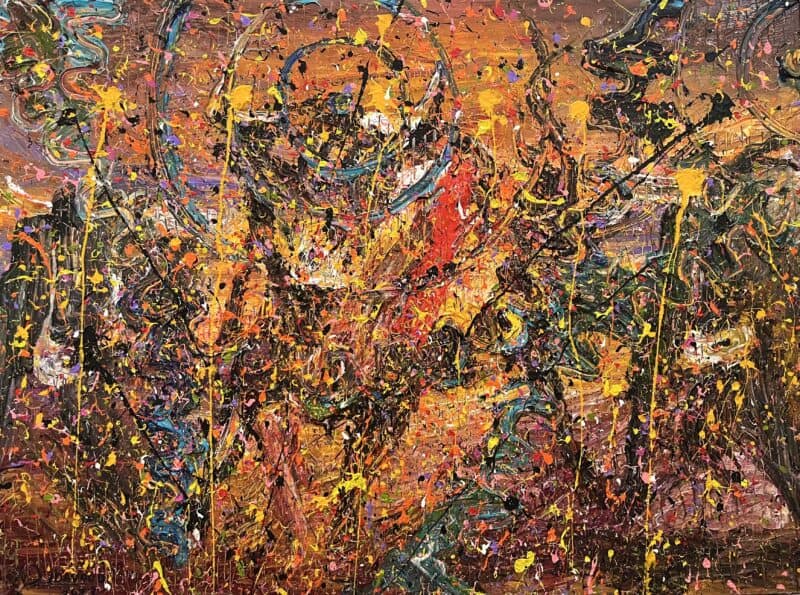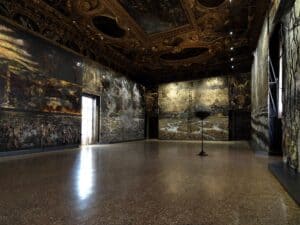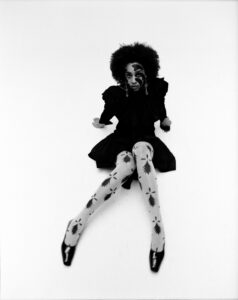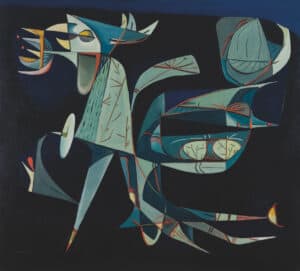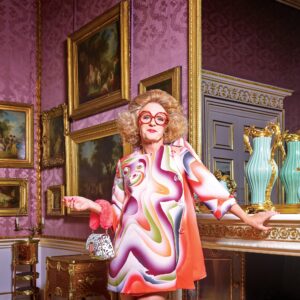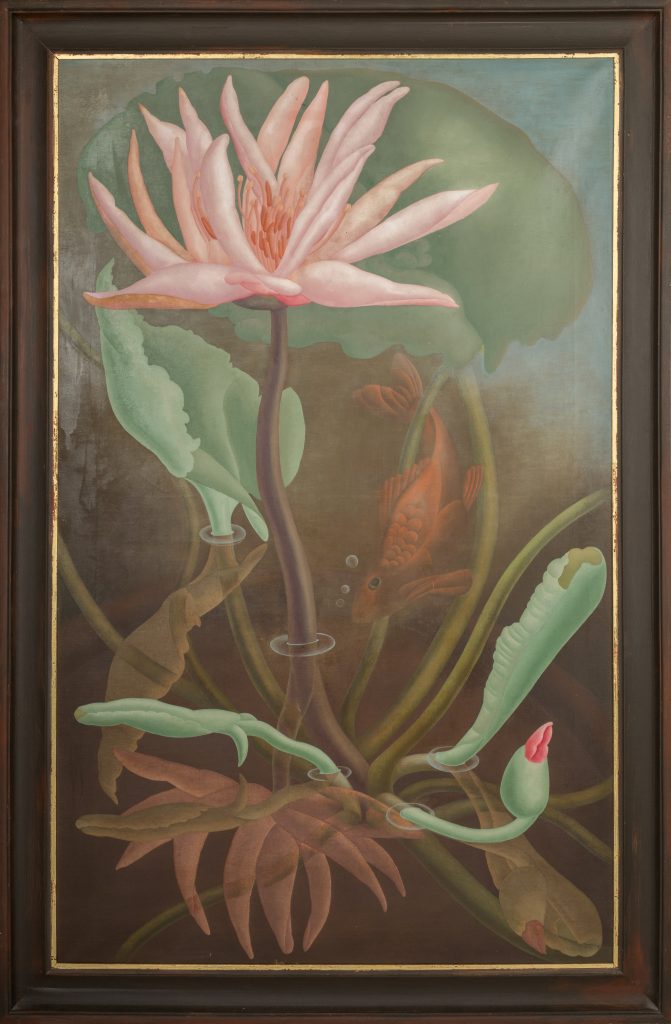
On a hot summer’s day in 1936 a woman dressed in a bridal gown paraded around Trafalgar Square, London, her head entirely covered with red roses, in tribute to Salvador Dalí’s painting, Woman with the Head of Roses (1935). The mystery woman, who puzzled passers-by and made newspaper headlines, was later revealed to be artist Sheila Legge (1911–1949), appearing that day as ‘the phantom of Surrealism’ to launch the London International Surrealist Exhibition, held at the New Burlington Galleries in Mayfair.
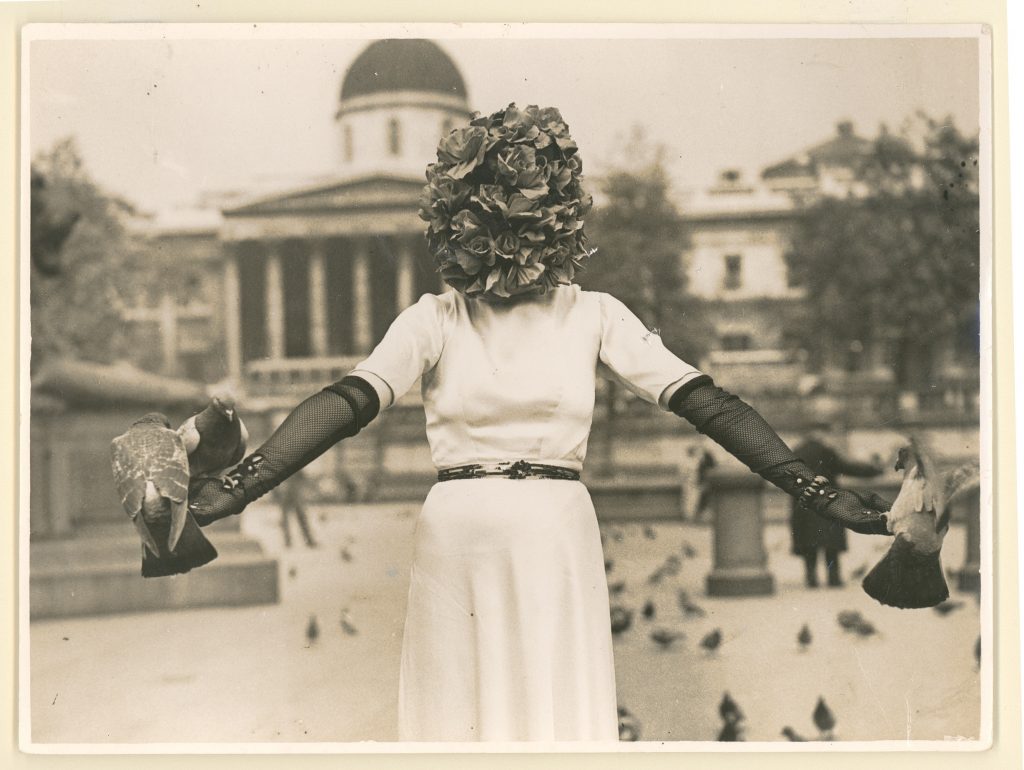
Sheila Legge as Surrealist ‘Phantom’, Trafalgar Square, London, 11th June 1936 Photograph attributed to Claude Cahun Courtesy Jersey Heritage Collections
Whitechapel Gallery’s new archive exhibition, Phantoms of Surrealism, brings together artworks, photographic scrapbooks, press cuttings and original correspondence from the London International Surrealist Exhibition (1936), including a new scale model. Coinciding with Eileen Agar: Angel of Anarchy, the show reveals the pivotal role of women as artists, behind-the-scenes organisers, editors and animators of the Surrealist movement in Britain.
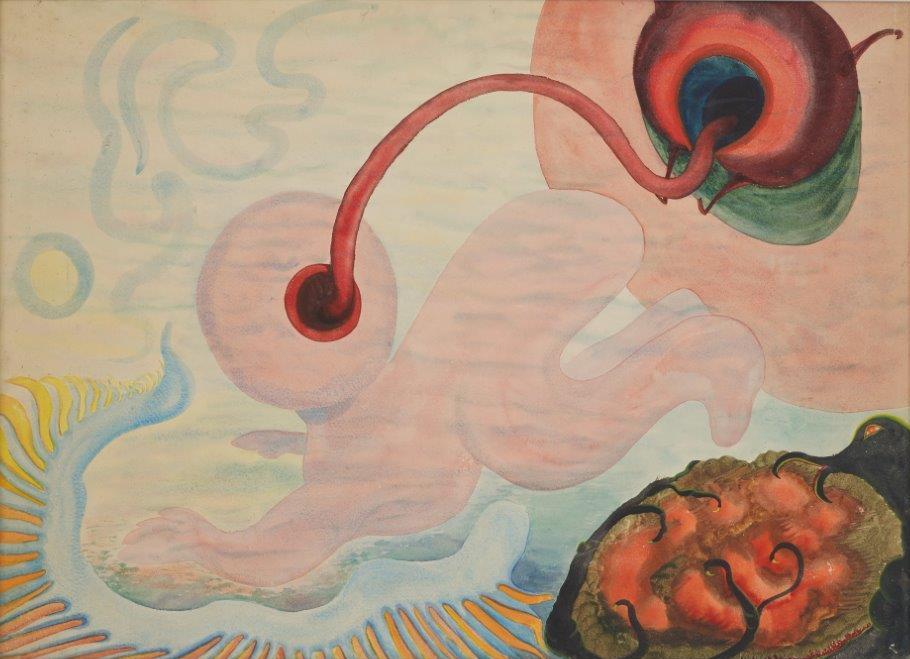
Grace Pailthorpe Sea Urchin / The Escaped Prisoner 7 May 1938 Watercolour on board 56×78cm Private Collection
The exhibition features eleven artists including Ruth Adams (1893–1949), Eileen Agar (1899–1991), Elizabeth Andrews (1882–1977), Diana Brinton Lee (d. 1982), Claude Cahun (1894–1954), Ithell Colquhoun (1906–1988), Sheila Legge, Grace Pailthorpe (1883–1971), Elizabeth Raikes (1907–1942), Edith Rimmington (1902–1986) and Stella Snead (1910–2006).
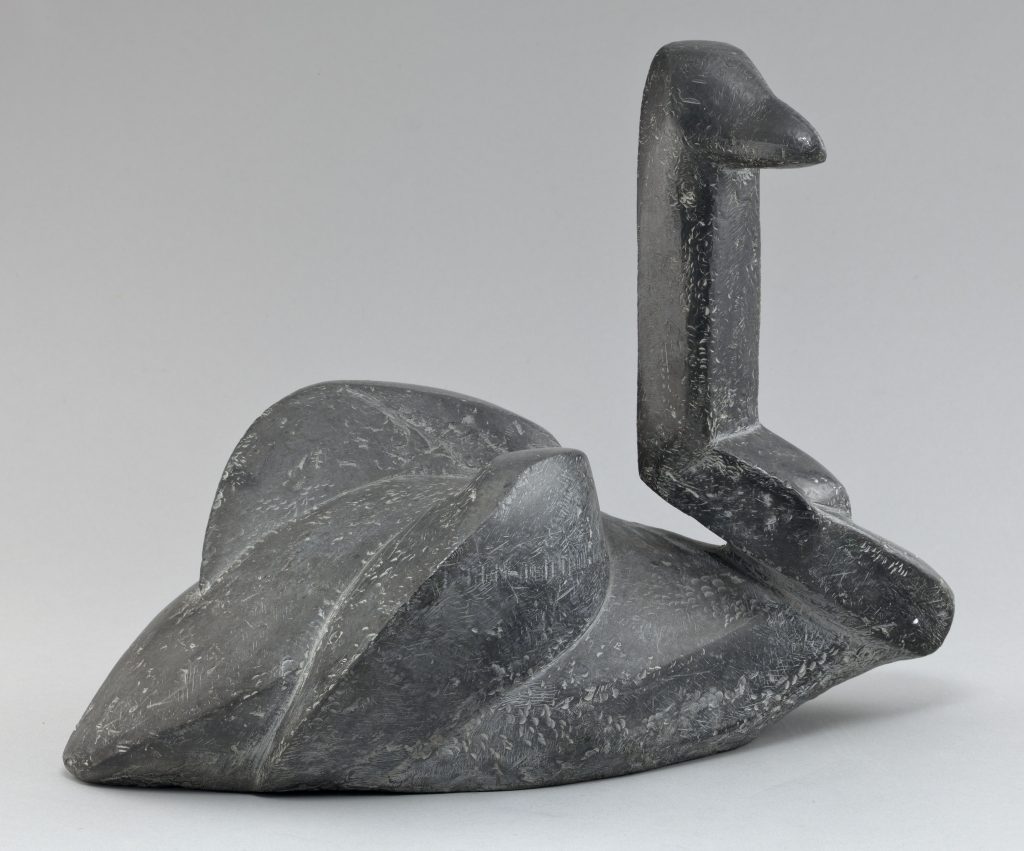
Elizabeth Andrews Swan Undated Lead 15.5 × 36 × 16.5 cm ©The Artist’s Estate, Towner Eastbourne
Also presented are artworks from an anti-war exhibition staged at Whitechapel Gallery in 1939 by The Artists’ International Association, dedicated to the ‘Unity of Artists for Peace, Democracy and Cultural Development’. Revisiting the Gallery in 2021 are two sculptures, Woman (1934) by Elizabeth Raikes and Swan (1930s) by Elizabeth Andrews, alongside Ithell Colquhoun’s painting Water-Flower (1938), recently acquired by a public collection after it was spotted for sale at an antiques shop in Penzance. Two works by Edith Rimmington, Family Tree (1937) and Fallen Chariot (1939), are also on view, demonstrating the artist’s particular interest in maritime landscapes and mythology.
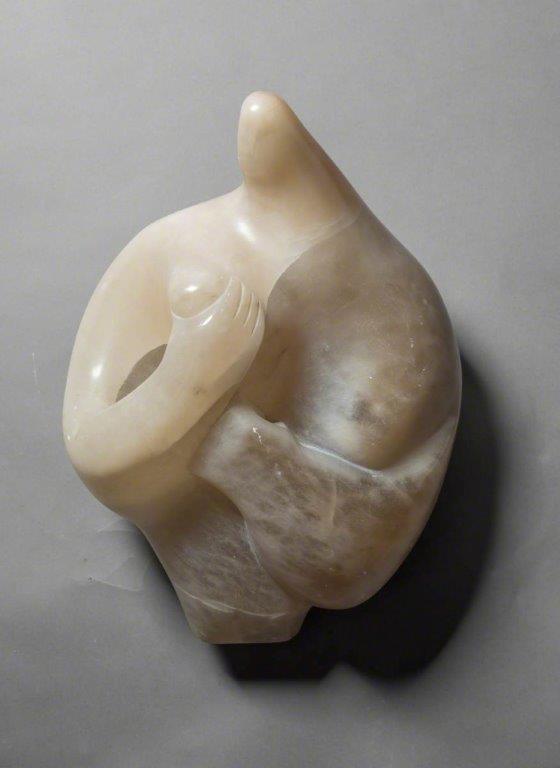
Elizabeth Raikes Woman 1934 Alabaster 22 × 38 × 25 cm ©The Artist’s Estate, Towner Eastbourne
The juxtaposition of these two momentous, historic displays provides these artists with long overdue recognition for their contributions to the history of art. Lesser-known figures such as Diana Brinton Lee and Stella Snead are here spotlighted as key strategists and participants in the early history of the movement in the UK. Where many women artists might once have been acknowledged as mere ‘actors’ in other renowned artists’ work, Phantoms of Surrealism crucially offers them centre stage.
Phantoms of Surrealism 19th May – 12th December 2021 Gallery 4 at Whitechapel Gallery whitechapelgallery.org
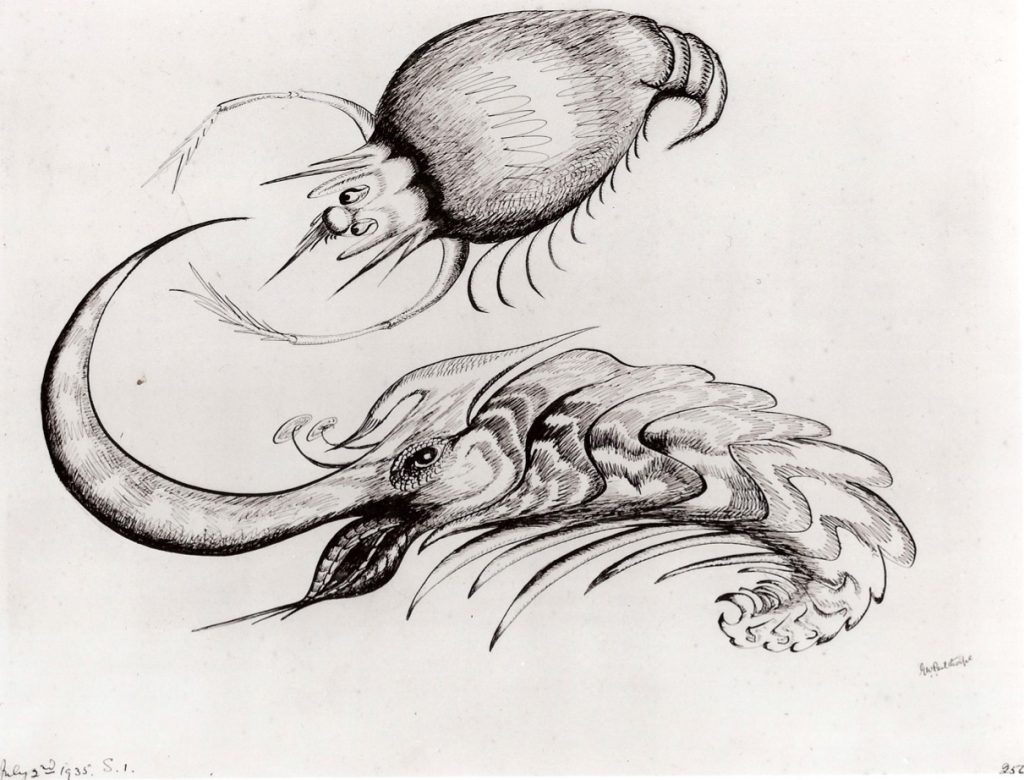
Grace Pailthorpe Crustacean Caress 1935 Pencil and Ink 30×38.5cm The Murray Family Collection, UK & USA
About the Artists
Ruth Adams (1893–1949) was born in York to a family involved in domestic ceramics manufacturing and pottery. In the early part of her career, Adams developed an interest in watercolour, which she shared in the Artists of the Northern Counties series of exhibitions at the Laing Art Gallery in Newcastle throughout the 1930s.
Eileen Agar (1899–1991) was a leading participant in the London International Surrealist Exhibition, whose style encompassed experiments with Cubism and Surrealism and spanned painting, collage, photography, sculpture and fashion.
Elizabeth Andrews (1882–1977) worked across both painting and sculpture. While portraits and still life works were often naturalistic, her sculptures made in the 1930s grew more experimental.
Diana Brinton Lee (d. 1982) was a suffragette and visual artist. Married to musician and artist Rupert Godfrey Lee, she was the secretary of the London Group where it is known that she actively encouraged women to join.
Claude Cahun (1894–1954) was a queer French photographer, sculptor and writer. They adopted the pseudonym Claude Cahun in 1917 and is best known for self-portraits in which the artist assumed a variety of personae.
Ithell Colquhoun (1906–1988) was one of the most significant contributors to Surrealism in Britain, but also had wider ranging interests in occultism, which she explored in both writing and visual art. She spent much of her life in the Lamorna valley, near Penzance, Cornwall.
Sheila Legge (1911–1949) was a Surrealist performance artist and poet. She is best known for her 1936 Trafalgar Square performance for the opening of London International Surrealist Exhibition, in which she posed in a costume inspired by a Salvador Dalí painting.
Grace Pailthorpe (1883–1971) was a surgeon in the First World War and later trained as a criminal psychologist. After meeting her husband, poet and artist Reuben Mednikoff, they developed a mutual artistic partnership, exploring the borders of art and the unconscious and exhibiting widely with the Surrealist group.
Elizabeth Raikes (1907–1942) studied with sculptor Henry Moore at the Royal Collage of Art. As well as working with alabaster stone, she made elongated figurative sculptures out of walnut wood, exhibiting them at the Royal Institute Galleries in Piccadilly in 1936.
Edith Rimmington (1902–1986) was born in London and studied at the Brighton School of Art. She joined the British Surrealist group in 1937, after which many of her works referred to ancient mythological subjects and themes of threat, renewal or change.
Stella Snead (1910–2006) produced early canvases populated by surreal bird creatures and dramatic landscapes and later pursued an interest in photography. Recognition returned to her late in life as one of her works was included in Surrealism USA, a major exhibition of American Surrealism at the National Academy Museum in New York in 2005.
